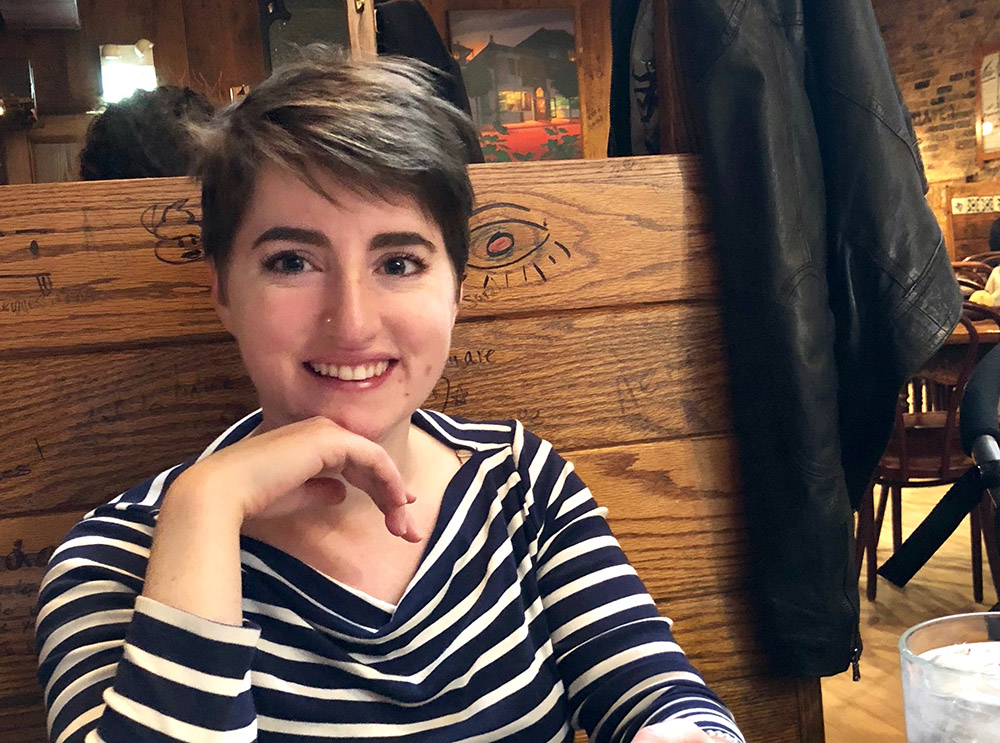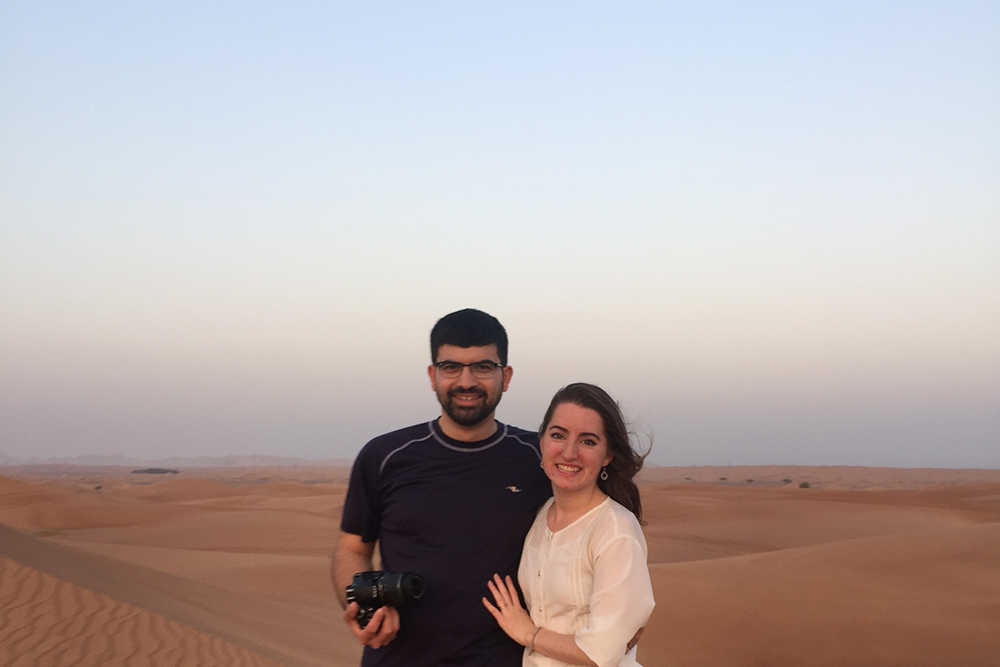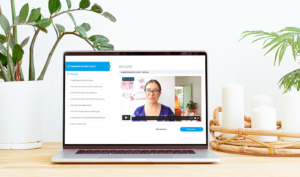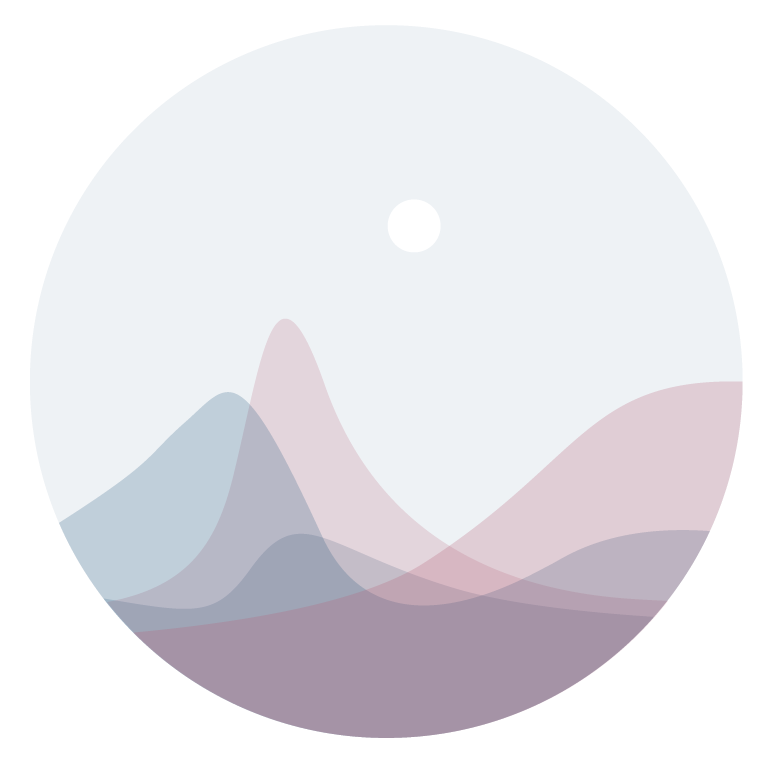“My cycle would be one of the first indicators that it was time to slow down and engage in some serious self care”.

It’s estimated that 3% of sexually active women in the United States use a Fertility Awareness-Based Method to avoid pregnancy – that’s over 1.1 million women! Unfortunately, the majority are using the outdated and ineffective rhythm method. Here in Australia, data from 2012-13 indicates that approximately 1.4% of sexually active women are using some form of Fertility Awareness-Based Method to avoid pregnancy. Other data indicates that this number could be as high as 2.8% of sexually active women.
The good news is that more and more women are placing their bodily autonomy and hormonal health as first priority and we are likely to see these numbers increase dramatically over the coming decade (especially as femtech advancements bring natural fertility management further into the public eye).
Join the conversation as I chat with people around the world to hear their stories and experiences with Fertility Awareness-Based Methods.
Rebecca, thanks for catching up! Please introduce yourself and tell us who you are!
I’m Rebecca—in my late twenties, married and a mom of one. I live in Southwestern Ontario, Canada. My education has largely centred around community development and regional planning and I have worked in non-profit development and the promotion of affordable housing.
How did you first hear about Fertility Awareness-Based Methods?
I first heard about Fertility Awareness-Based Methods in college through some people within my church, as many FABMs are used for naturally family planning and reproductive and gynecological health monitoring within Catholic circles. One friend in particular was telling me about how empowering it was to learn how her cycle worked and how this impacted her self confidence and body image. The more I looked into it, the more I wondered, “Why the heck aren’t women and girls taught this information more widely?” The following year, I worked with an amazing doctor and Billings Educator to learn to chart my cycle. We used to meet up in a coffee shop in my little university town to go over my charts and geek out over cervical fluid!
What FABM do you currently use and what do you love about it?
I started charting using the Billings Ovulation Method and used that method for about three years. When I relocated to my current city and got engaged, my husband decided he wanted to learn about charting as well to walk the journey with me, so we looked up classes in the area. This lead me to Creighton, which is similar to the Billings Ovulation Model but uses a standardized system for denoting the cervical fluid observations. What set Creighton apart for me was the availability of NaPro Technology—a women’s health science that monitors and maintains a woman’s reproductive and gynecological health. It provides medical and surgical treatments that cooperate completely with the reproductive system instead of suppressing or circumnavigating it. NaPro doctors—family physicians, ob/gyns, endocrinologists and the like—are actually trained to read Creighton charts to aid in their diagnoses. The opportunity to have medical practitioners that could ‘read’ my charts really sealed the deal for me and convinced me to make the switch.
Can you tell us what has been the most major benefit for you of using a FABM?
The power that comes from knowing what is going on in my body is real, especially when it came to monitoring stress in seasons of life where I was really hustling: competing in college sport; pulling all-nighters working on my master’s thesis, planning a wedding etc. Oftentimes, my cycle would be one of the first indicators that it was time to slow down and engage in some serious self care.

How has using a FABM impacted your health?
Charting my cycle has helped me manage painful periods. I’ve largely used diet and exercise to improve things but there are a ton of ways to replenish the body, rebalance hormones, and treat more all-encompassing gynecological conditions like PCOS and endometriosis. Further, I’ve really struggled with generalized anxiety in certain seasons of life and am currently learning more and more about how my reproductive hormones play into that. I am enthused at the prospect of helping my body rebalance in the most gentle and efficient way possible in the postpartum period by charting my cycle and tailoring my diet and exercise to meet my body’s needs right now.
How has using a FABM impacted your relationship?
Gosh, I can’t say enough about FABMs in terms of strengthening my relationship with my husband. Let me tell you, if you can discuss cervical fluid with your partner, you can discuss anything. Ha! I’m blessed that my husband was on board with using FABMs to plan our family since the very beginning. I think one of the reasons it’s worked well for us is because it’s really enhanced our communication. The Creighton Model is unique because it is both an effective means to avoid pregnancy as well as a very efficient means to achieve pregnancy, depending on which set of instructions are used. As such, using this method has led us to discuss our family planning goals each and every month, assess our mental and physical health, finances and so forth and take stock of our lives together. This has had super positive impacts on our communication and ensures shared responsibility for our family and each others’ well-being. Furthermore, charting my cycle with Creighton has allowed us to achieve pregnancy simply, date the pregnancy accurately, and investigate a previous miscarriage to ensure it wasn’t a sign of hormonal imbalance.
What has your experience been like with mainstream health professionals when discussing FABM’s?
My use of a natural method has been met with skepticism at times but thankfully I’ve never had any of my healthcare providers push hormonal methods of contraception on me. In fact, while some have certainly understood it to be the “rhythm method” and advised me to not be surprised by an unexpected pregnancy, I’ve also been lucky enough to have others on my healthcare team express genuine interest in learning a natural method themselves and even start comparing notes about Toni Weschler’s “Taking Charge of Your Fertility”. So, I genuinely feel that women themselves are driving changes as they look for more holistic options and that the tide is beginning to turn.

If you could give advice to anyone who is just starting to look into Fertility Awareness, what would you say?
It is definitely worth it! Take stock of your lifestyle and do your research before choosing a method, as they do vary in both their efficacy rates, but also which biomarkers are tracked and at which time of day. I think it’s worthwhile to learn how to chart your ovulation cycle the old-school way [on paper] instead of starting with an app. This will allow you to truly understand how your body works and take ownership of your data. Lastly, I’d recommend learning alongside a FABM instructor; they’ll be able to walk with you through your first few cycles and help you gain confidence in the method.
Where do you see the future of FABM’s?
I am so thrilled about the surge of interest in FABMs and really do feel this is the beginning of a women’s health revolution. So much so that I want to be a part of it and have begun studying the Creighton Model FertilityCare System in the hopes of becoming a certified Practitioner. Women need to know this information and I hope to one day see it taught in schools as part of the Health Education curriculum.
Thanks Rebecca and where can we find you to follow your journey?
You can find me sharing my journey in fertility appreciation and the road to become a Creighton Practitioner at @charbelfertilitycare on Instagram.

